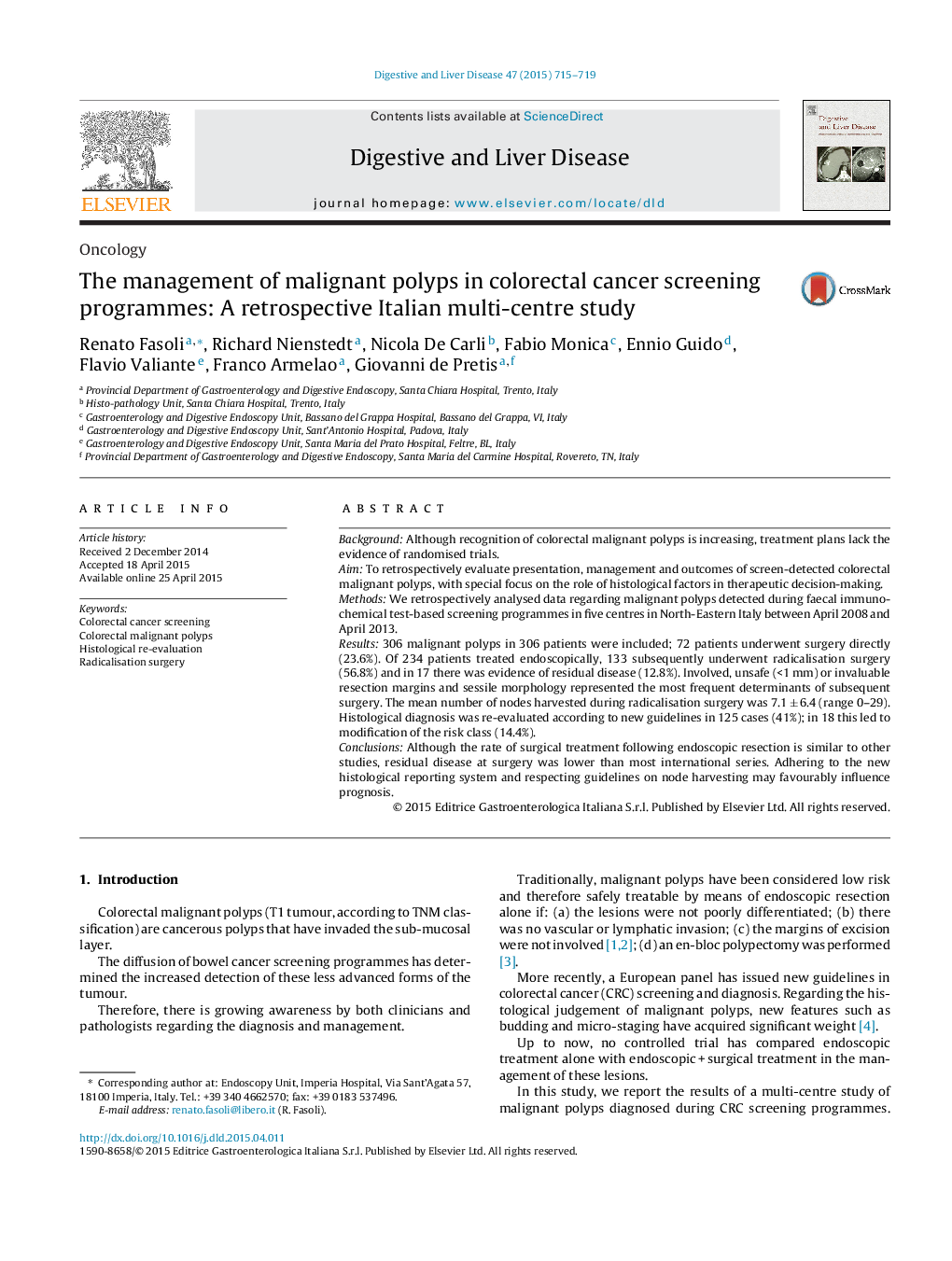| Article ID | Journal | Published Year | Pages | File Type |
|---|---|---|---|---|
| 6088218 | Digestive and Liver Disease | 2015 | 5 Pages |
BackgroundAlthough recognition of colorectal malignant polyps is increasing, treatment plans lack the evidence of randomised trials.AimTo retrospectively evaluate presentation, management and outcomes of screen-detected colorectal malignant polyps, with special focus on the role of histological factors in therapeutic decision-making.MethodsWe retrospectively analysed data regarding malignant polyps detected during faecal immuno-chemical test-based screening programmes in five centres in North-Eastern Italy between April 2008 and April 2013.Results306 malignant polyps in 306 patients were included; 72 patients underwent surgery directly (23.6%). Of 234 patients treated endoscopically, 133 subsequently underwent radicalisation surgery (56.8%) and in 17 there was evidence of residual disease (12.8%). Involved, unsafe (<1 mm) or invaluable resection margins and sessile morphology represented the most frequent determinants of subsequent surgery. The mean number of nodes harvested during radicalisation surgery was 7.1 ± 6.4 (range 0-29). Histological diagnosis was re-evaluated according to new guidelines in 125 cases (41%); in 18 this led to modification of the risk class (14.4%).ConclusionsAlthough the rate of surgical treatment following endoscopic resection is similar to other studies, residual disease at surgery was lower than most international series. Adhering to the new histological reporting system and respecting guidelines on node harvesting may favourably influence prognosis.
